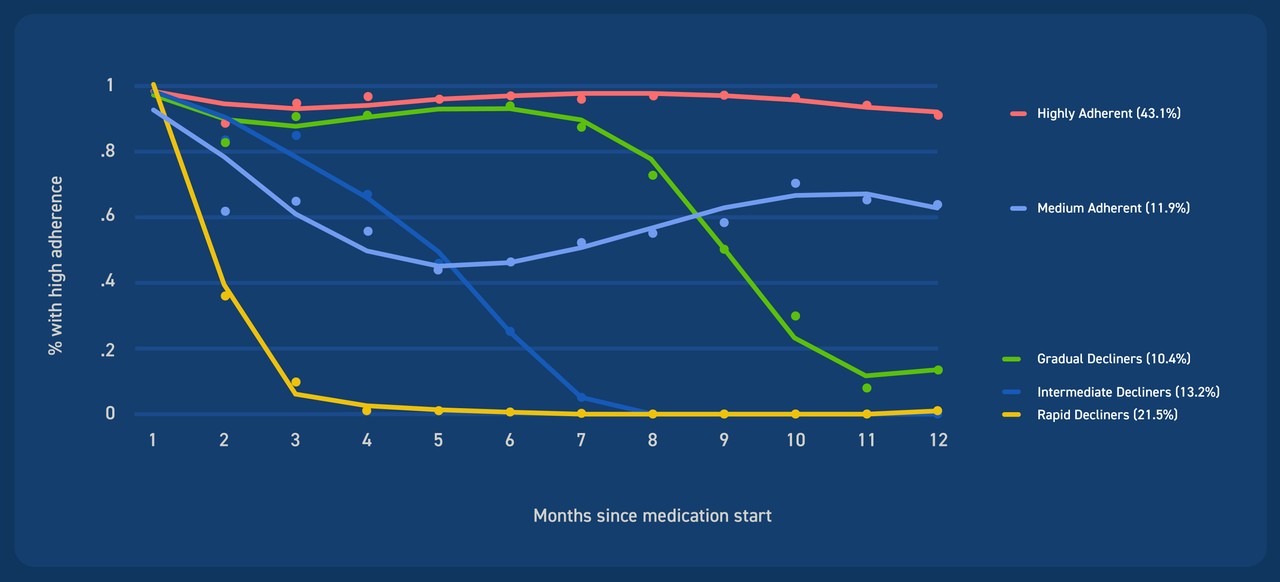Case Study
Exploring treatment
Patterns & Outcomes
using Medicare
100% data
The Question
For many chronic health conditions, there is a lack of useful information about treatment patterns and spending on prescription drugs and medical technologies.
There is even less documented about the drivers of health consumption and its consequences. Medicare, the single largest payer for health care in the United States, provides insurance to nearly all individuals starting at age 65. Our client approached us with the following question: what trends in polypharmacy rates and outcomes do we see in the Medicare population?
The Approach
Until recently, commercial interests were excluded from access to research-identifiable Medicare data.
Working with the Centers for Medicare and Medicaid Services (CMS), Medicus has gained ongoing access to 100% research-identifiable administrative data on patients, providers, and plans in the Medicare insurance program. Our access covers data starting in 2005 and is regularly refreshed, allowing us to quickly identify disease-specific cohorts and conduct sophisticated analyses in a HIPAA-compliant, secure computing environment.
The Results
Medicus conducted the first published study assessing the prevalence and outcomes of anticholinergic polypharmacy.
We found a steady decline in polypharmacy use among Medicare patients with overactive bladder from 2007–2017, and significantly higher polypharmacy rates among women. For similar analyses in other disease areas, we have found substantial variation in patient-specific medication patterns using group-based trajectory modeling.

The Long And
Short Of it
For many chronic diseases, there is an absence of evidence on patient outcomes that Medicare provides rich data to address.
Medicus has obtained ongoing access to comprehensive Medicare data and has the expertise to conduct publication-grade analyses for our clients.